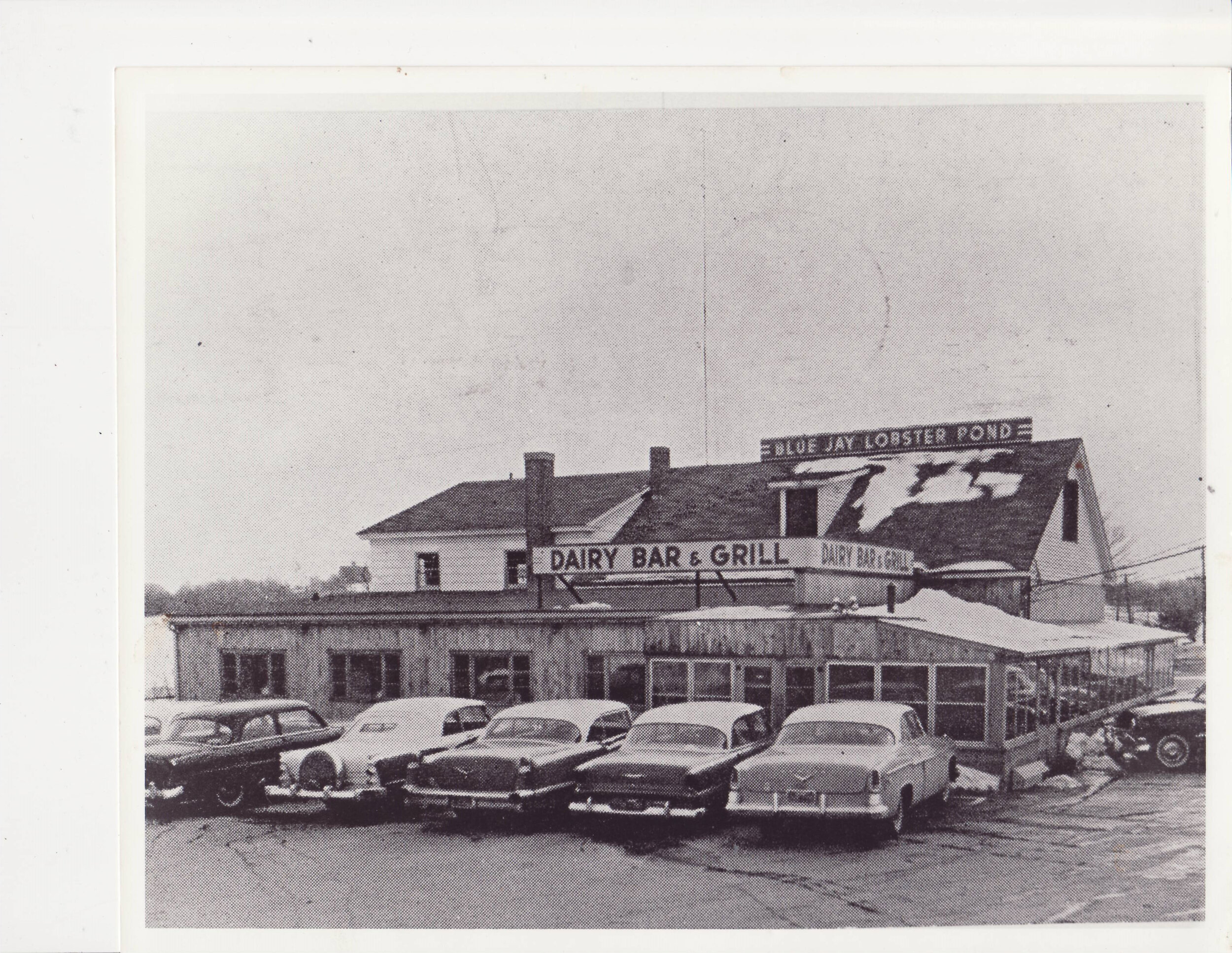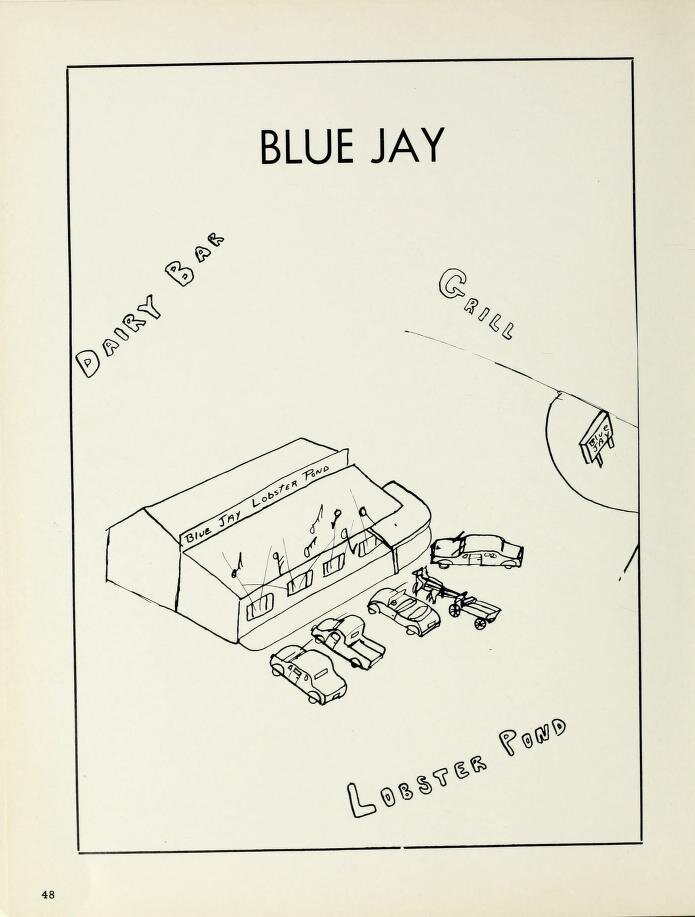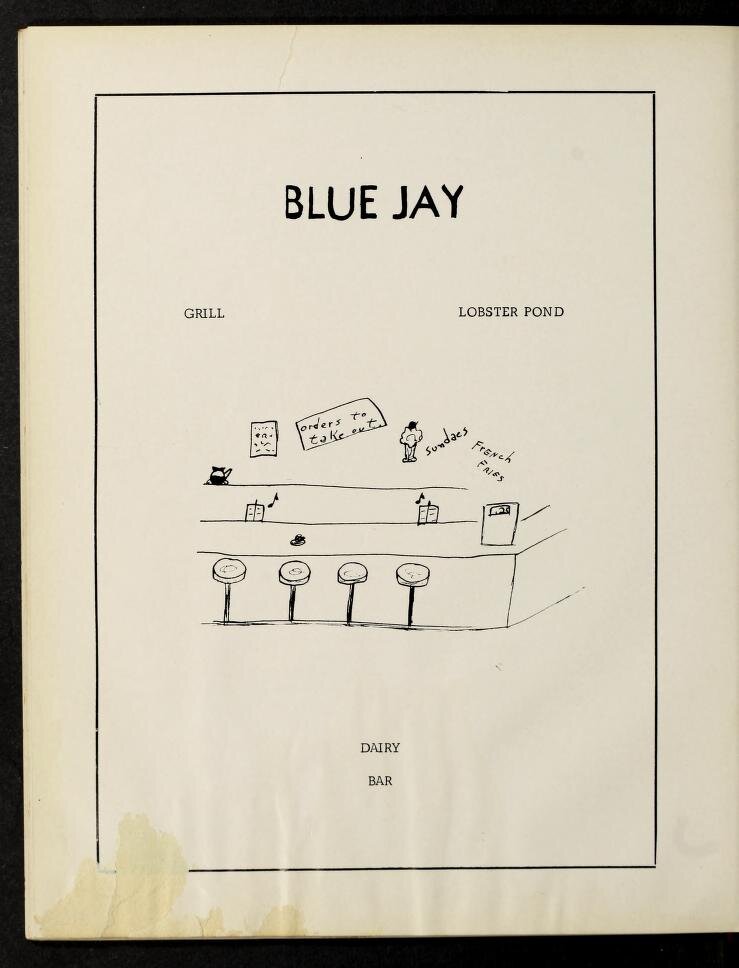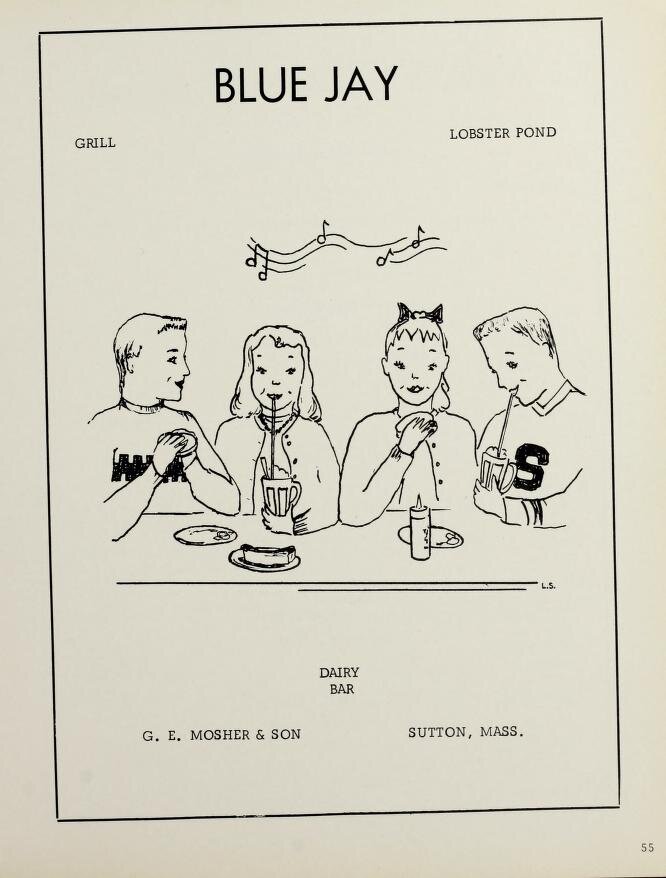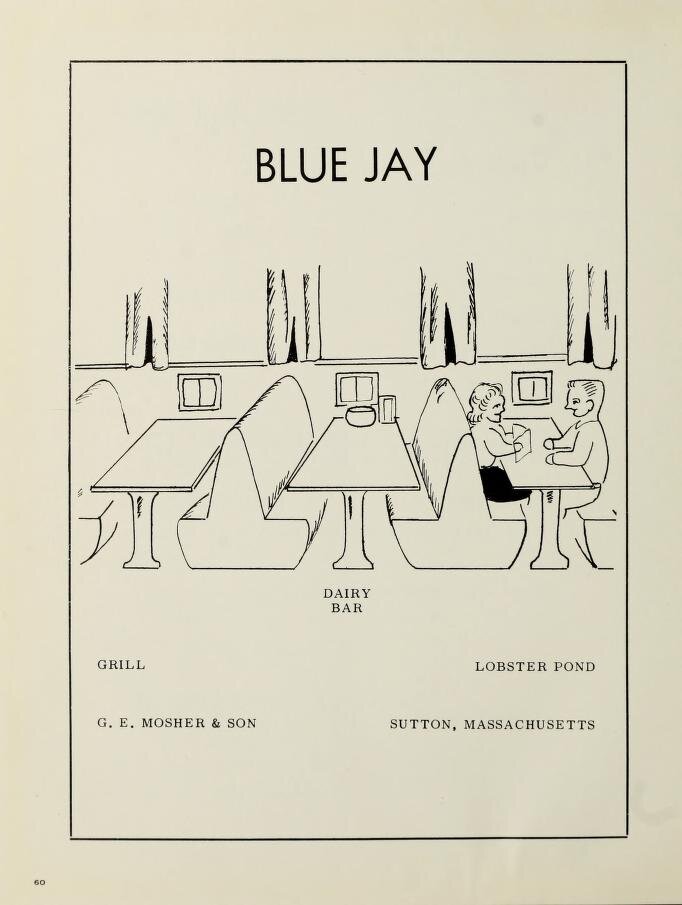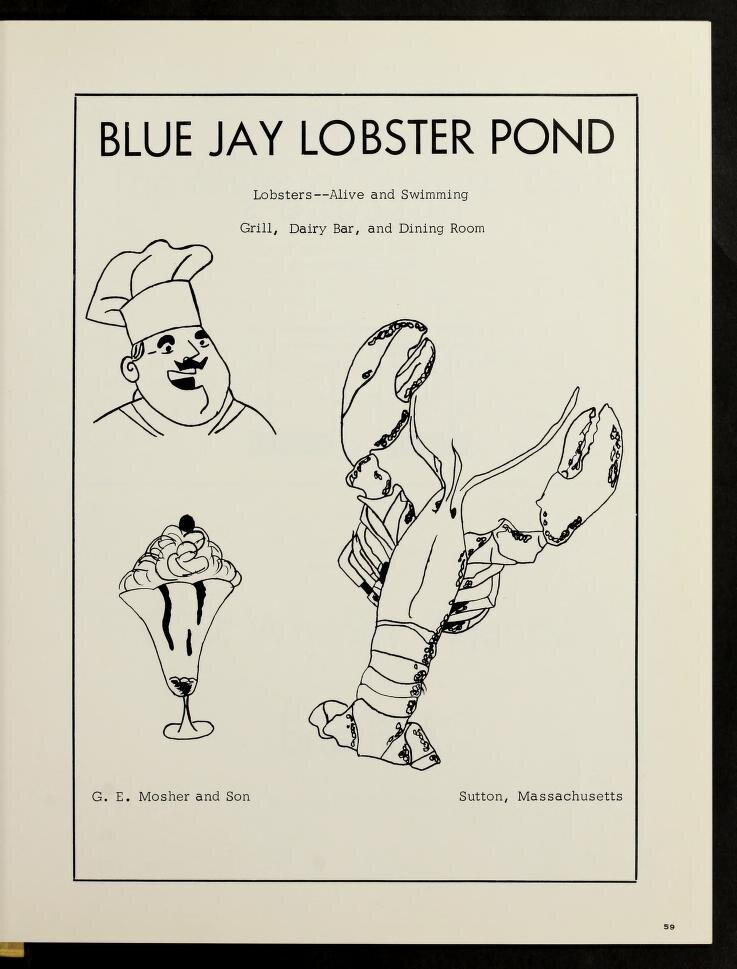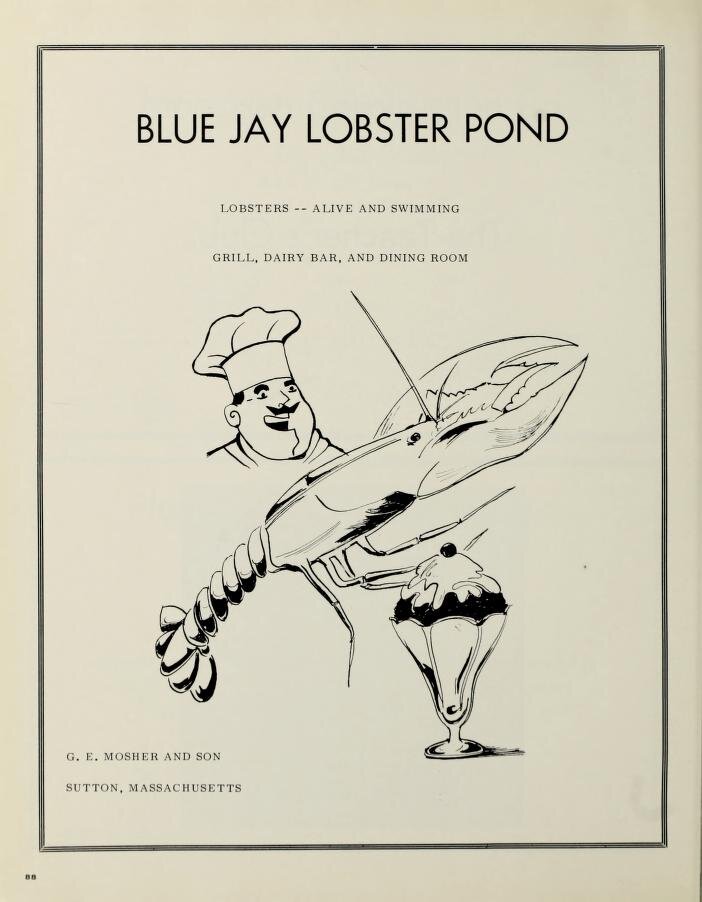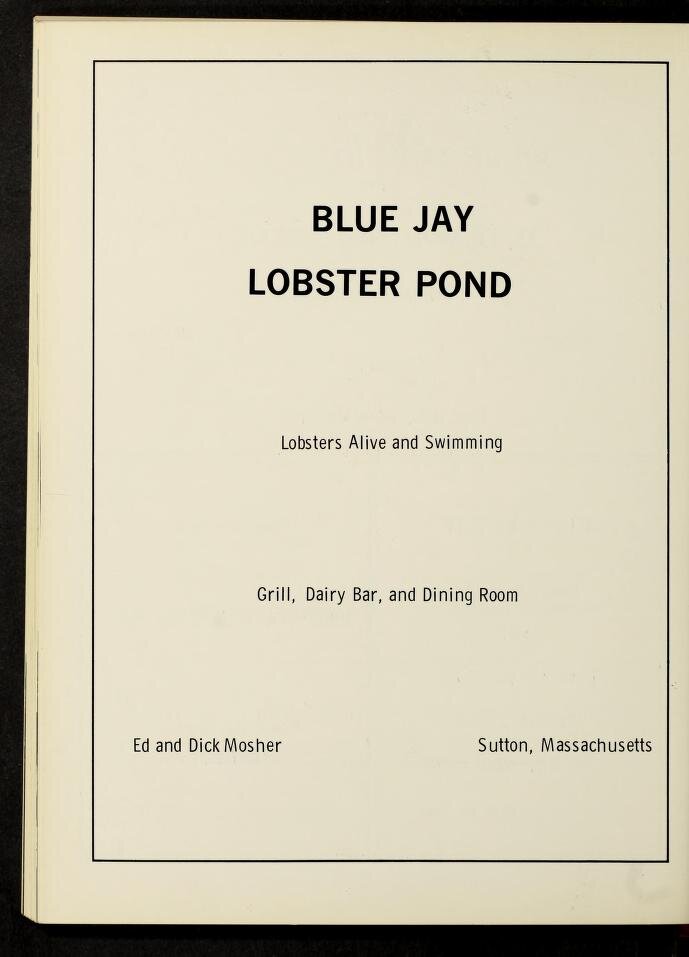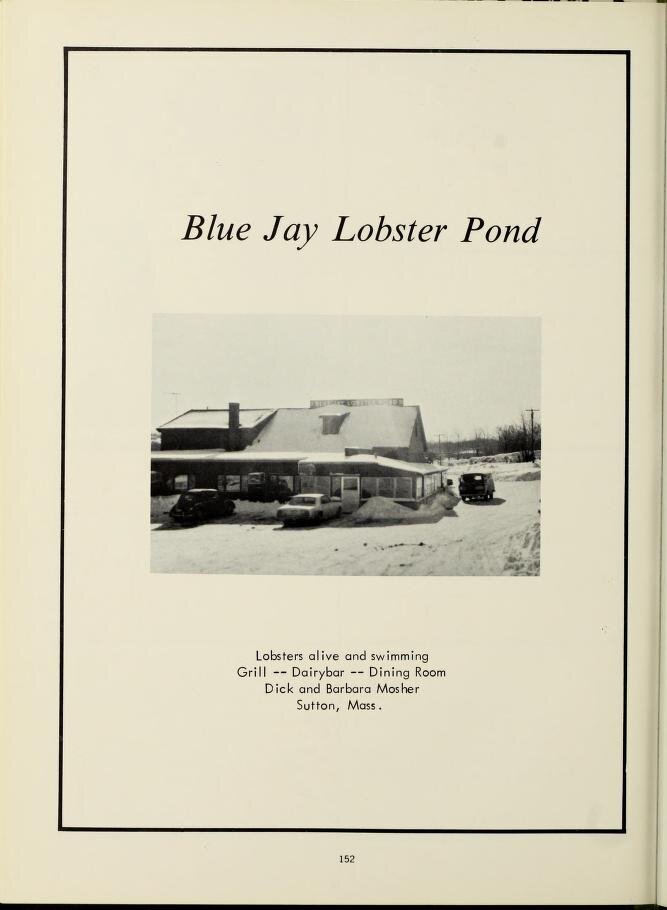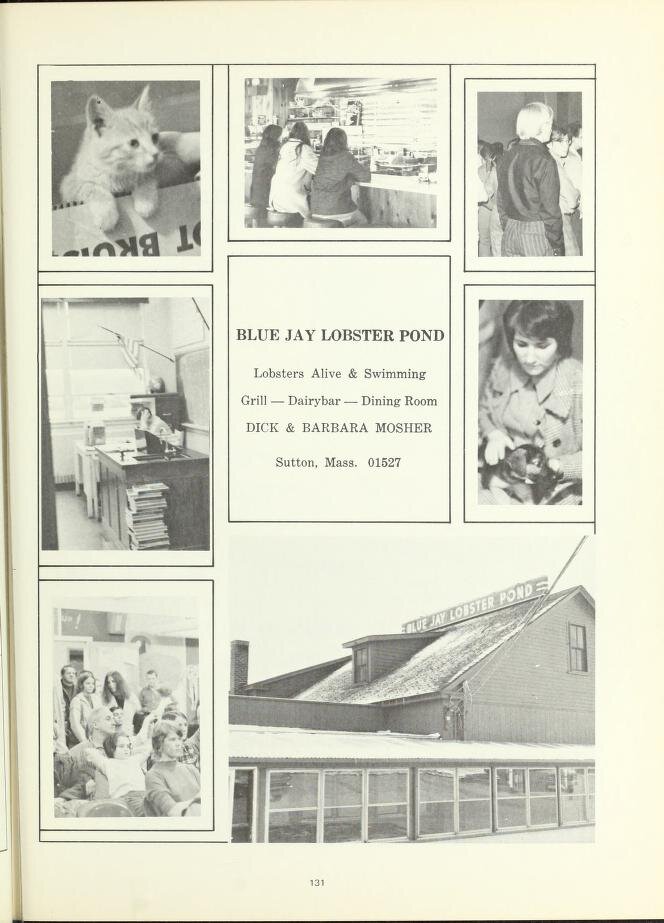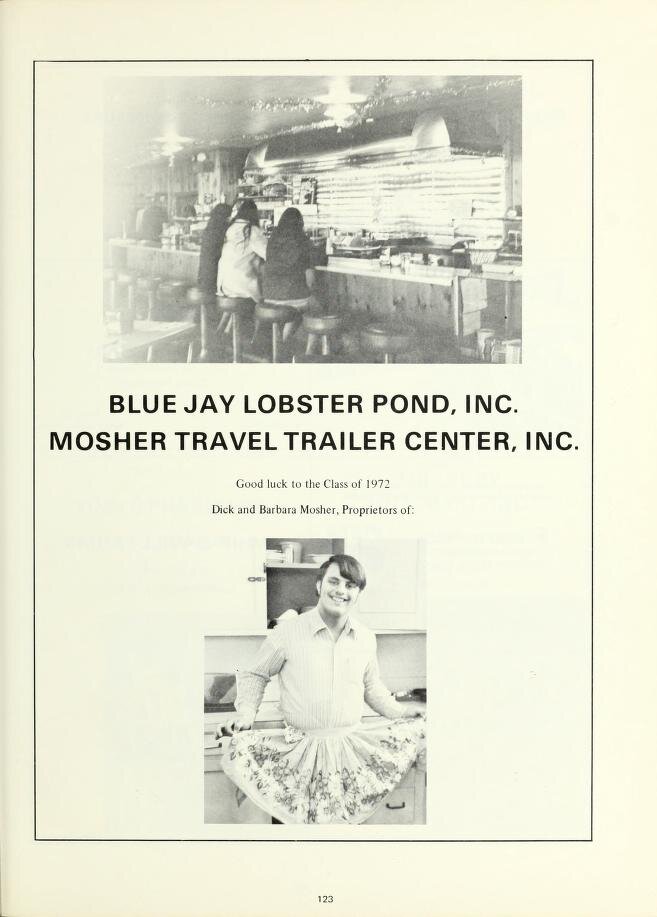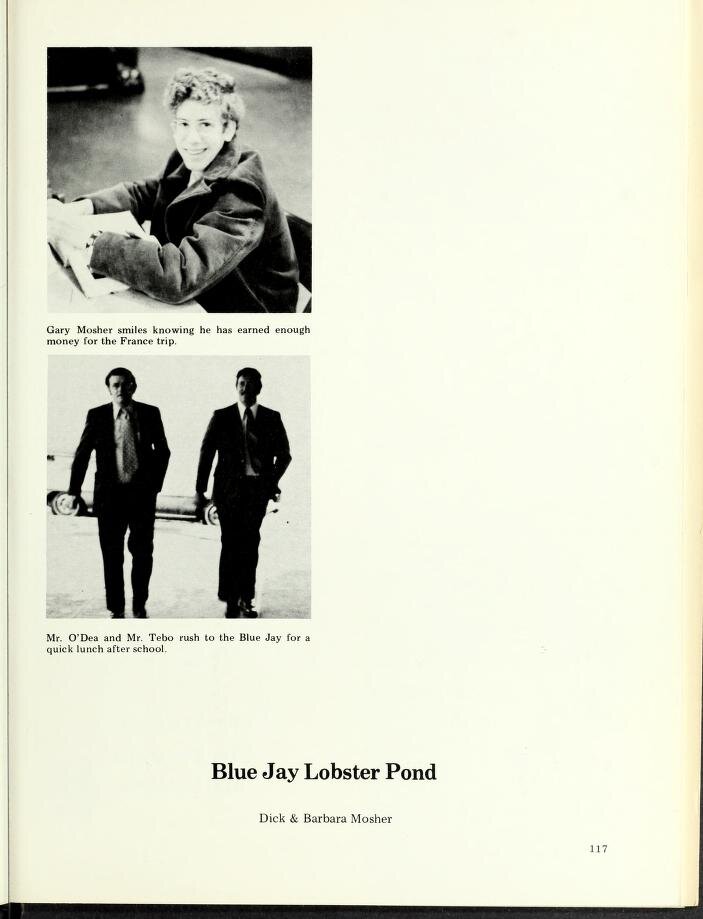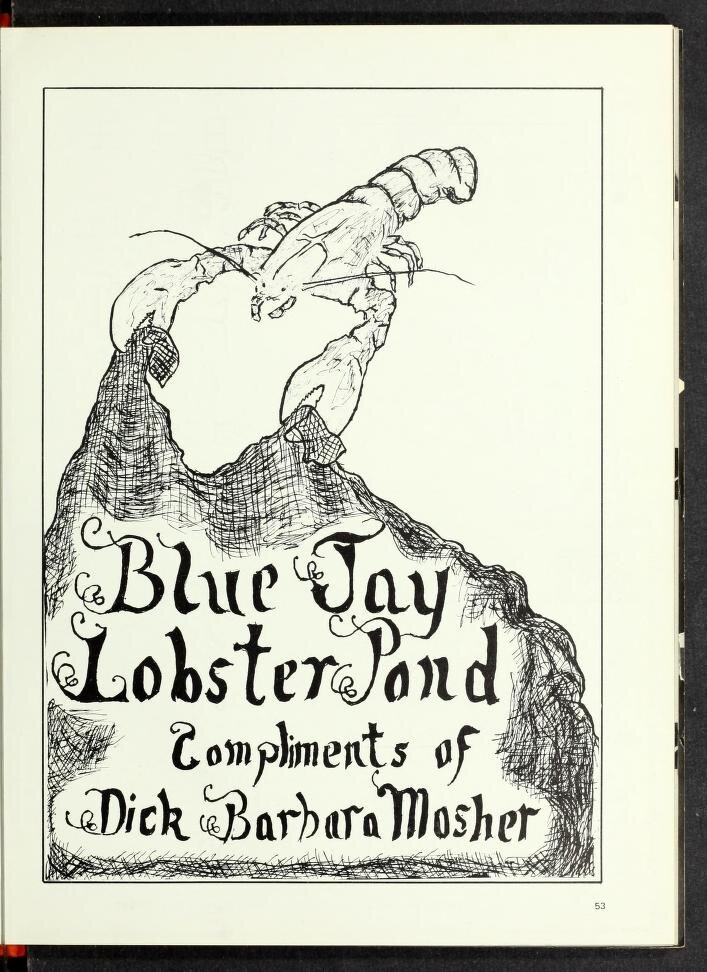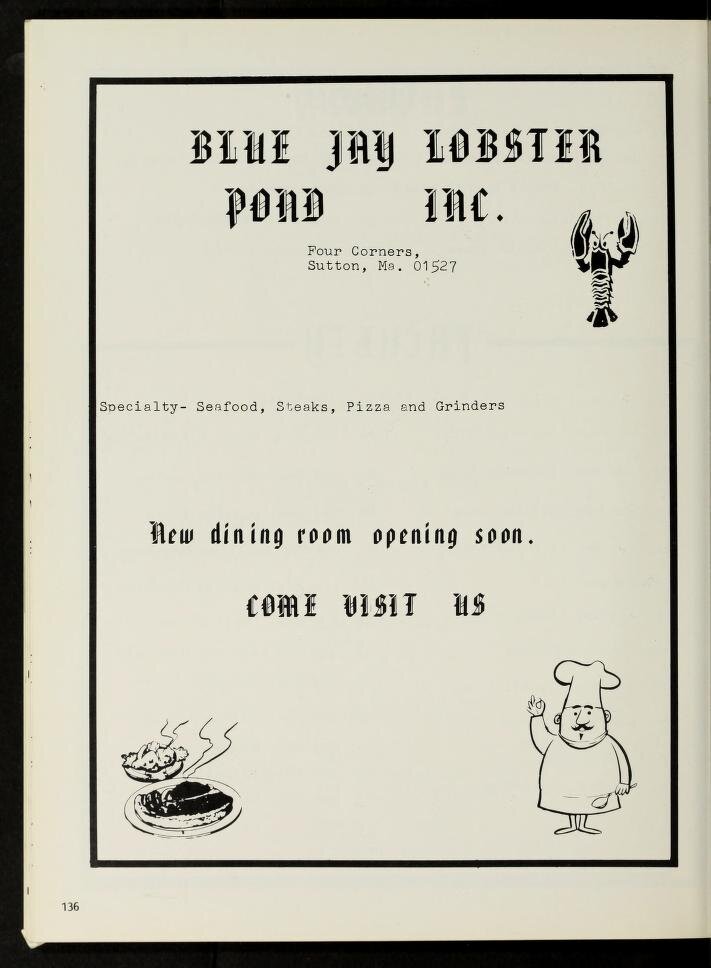Originally Published January 15, 2020 by Steve LeClaire
I’d love to know who held the first ‘Common Victualler’ license in the town of Sutton. I’d be willing to bet Lazarus Lebaron’s tavern in Wally Johnson’s former (ok, George Funari’s current) house would be a contender. Many an 18th century traveler, weary and dusty from rumbling over dirt road by horse and wagon probably quaffed a mug of ale or dined on a slice of meat, bread or cheese while enjoying Lazarus’ hospitality. Sutton’s hospitality roots run deep.
Besides various taverns, where did the locals go? From 1931 to 1941 my grandmother ran ‘Singletary Farm’, in the building that now houses St Mark’s Catholic Church Rectory. Sutton’s youth could sometimes be found at the barn dances in good weather, but you could hardly call what was offered there ‘fast food’ or even ‘informal dining’. Singletary Farm was a little more ‘upscale’ than that, at least in my grandmother’s mind. She called it a ‘tea-room’. You got a good meal, but you also got gracious hospitality.
Herbert L. Ray had a small store just south of their house in Sutton Center, next to Sutton’s first high school. Here they sold “ice cream and tonics, cigars and tobacco.” I also read in town reports of the day that Mrs. Ray served a hot lunch that the school kids could purchase for a dime in the 1920’s and 30’s. My Mom always noted that everybody referred to him as “Hog Ray”, for reasons that likely have been taken to the graves of his many customers.
As the automotive age dawned, and the ease of mobility increased, diners and roadside stops sprung up to meet the needs of travelers. Car hops like The Flying Saucer over on route 20 drew kids, as did Speedy’s on Shrewsbury Street in Worcester. I remember the crinkly cut fries served in red & white striped boxes at The Flying Saucer. What a special treat to go for those! Those were quintessential 1950’s roadside car hops, and Sutton had its share of informal eating joints as well. Doris & Nick VanTwyver’s “Doris & Nick’s” on Central Turnpike, Red and Jenny Labrie’s “Corey’s Hot Dogs”, as well as Henry & Bea Lavoie’s “Henry’s Lunch”, both on the Southbound side of Route 146, and John and Rose Mooskian’s “Pleasant Valley Restaurant” diner on the northbound side. You got good, quick meals, albeit served across a Formica counter.
There was Vern’s in Manchaug, which was known for steamers and fried chicken in a basket. But when I was a kid growing up in the 1960’s, the place that held eminent fascination – and was ‘the’ place to go in Sutton - was The Blue Jay.
Known over the years as The Blue Jay Club, Blue Jay Four Corners, Blue Jay Lobster Pond, The Blue Jay, and finally simply as The Jay, this famed Sutton eatery and bar served Sutton well. The Sutton town history does not address the venue’s heyday, but certainly traces its origins. It says: “On the southeast corner of the junction of the roads, S. Martin Shaw sold land to C.E. LaRochelle of Whitinsville in 1931. This was in the days of prohibition and Mr. Larochelle erected a gas station. He maintained that a bus line was to be opened through the town and this would be a stopping place. The gas station turned into a dime and dance hall, known as The Blue Jay Club. In a few years Mr. Larochelle sold to William Bellargeon, who later sold to Ulysses Paquin. The Paquins made an apartment over the club and lived there with sons Ronald and Warren.
Details of how the Blue Jay got started or got its name are sketchy at best. An article in the Millbury-Sutton Chronicle in 2010 stated that: “In the 1920’s, 25 men collaborated to purchase a schoolhouse on a spot known as Plummers Corner (in Whitinsville – currently Ocean State Job Lot) and moved the building to its present location around 1932.” Whether or not the town history implies that Larochelle or Paquin sold illicit booze during prohibition (which ended in 1933) is lost to facts and interpretation. But, for the next 20 years it was known as a bar with a 5 room apartment on the 2nd floor. The original building was encapsulated into The Blue Jay as renovations and expansions were made as the business grew.
In 1950, George & Helen Mosher, along with their two sons Richard and Ed purchased the business and molded the restaurant into the family friendly eatery that would become known throughout the region for seafood. Richard, who had been an accountant – and his wife Barbara would become the face of the business during its heyday, before turning it over to their sons.
Under the Mosher family ownership, The Blue Jay was one of very few full service – full menu restaurants in town. ‘The Jay’ was strategically located at the intersection of Putnam Hill Road and Central Turnpike – the true geographical center of Sutton. In the 1950’s, it became a destination place to go. There was always a good crowd and the booths, counter and dining room would be filled during the summer months with patrons from the various campgrounds around Manchaug Lake. It was not ‘fine, elegant dining’, but The Jay served good, wholesome homemade food. They claimed generous portions in the American tradition. Folks traveled from Rhode Island, Connecticut and beyond just for the live lobsters and fried clam dinners.
One of the earliest additions became one of the most enduring symbols. The Moshers had a custom built lobster pond installed – basically a series of fiberglass tanks that turned fresh water into salt water. The ‘pond’ was designed to hold as many as 2000 lobsters at once. Guests were welcome to walk up to the pond and choose their lobster to be immediately cooked. The lobster tanks were wonders to behold, full of live wriggling crustaceans, their massive claws pegged or rubber banded for safety. This writer stared into those tanks for what seemed like hours, fascinated by the lobsters. We wanted to poke at them and pick them up, but were always admonished by the grownups to ‘leave the lobsters alone’.
This writer remembers the Blue Jay dairy bar. The dairy bar room was on the north side of the building, facing Central Turnpike. A large paved parking lot sat between the building and the road, where cars could pull right up to the building. The parking lot surrounded the front three sides. A covered porch wrapped around the main entrance on the front northwest corner. Entering from the parking lot, one first encountered the sound of running water from the lobster tanks immediately to one’s right. A half- dozen booths lined the wall to the left, against the parking lot side. This wall was lined with large picture windows, looking out over the parking lot.
The Jay was the personification of a 1950’s roadside restaurant. A Jukebox held all the hits of the day on 45 rpm records. Control mechanisms were at each booth where for a quarter (a dime maybe?) you could select your song. The sounds of Elvis, Jerry Lee Lewis, Patsy Cline, and Fats Domino were juxtapositioned with a homogeneous blending of white bread pop from Perry Como, Andy Williams, Pat Boone & Patti Page. The jukebox played softly in the background to the clink of glasses, and the sounds of silverware on plates – added to the gentle flow of water over the lobsters. A row of eight chrome and red vinyl stools were anchored to the floor in front of the counter. Behind the counter was a lengthy grill and service area, decked out in gleaming steel, looking similar to the slick and sleek Airstream travel trailers Dick Mosher began selling in the adjacent parking lot. Even well into the 1970’s, the dairy bar seemed just like on the TV show “Happy Days”. The work area against the wall contained a grill where the burgers and grilled cheese sandwiches were made, along with a milk shake machine and sink for washing dishes.
The Blue Jay was THE place to go for teens in the 1950’s and 60’s. I never saw it empty. Dick Mosher treated the high school basketball team to dinner when they won the Clark Tournament in 1958. It was a huge deal. Those kids said they felt like celebrities, in their letter jackets. George Lamothe, the captain and star of that team, later reflected, “We celebrated at the Blue Jay after that win [the Clark championship game, a 4-point victory over North Brookfield. That was like going to Las Vegas. We thought we were pretty slick when we could go to the Blue Jay. It didn’t matter that there wasn’t any place else to go.”Burgers, fries and milkshakes. Happy Days.
The connection of the Blue Jay and Sutton sports remained strong over the years. The Mosher boys all played baseball, with Andy captaining the Sammie baseball team in 1978. Dick Mosher sponsored one of the original and enduring teams in the Sutton Little League, who wore “Blue Jay Lobster Pond” proudly in blue across their uniforms and created strong teams in the late 60s and early 70s under coaches Bill Eklund and Nelson Towle. It was the tradition each year that the winning team (whether “Blue Jay” or another team) would drive from the Little League field by the old high school (actually they were driven by their parents as they were ages 10-12)_to celebrate at the Blue Jay with milk shakes from the dairy window. Never would a milk shake at any other point in a celebrating players’ life taste as good as on that night. The Moshers also sponsored Sutton’s sole Babe Ruth league team in those years, “Mosher Trailer”, and once again the Blue Jay was the venue for celebrations of championships won by that team, including the Worcester County Babe Ruth championship in 1972.
‘The Jay’ provided gainful employment for a host of Sutton kids as dishwashers and busboys, including future Sutton police chief John Hebert who learned to cook there. The Mosher’s kids Ricky, Gary, Andy and Beth all worked at the restaurant. A host of Sutton women waitressed there. It seemed Blanche Bottomly worked there forever. The waitresses had one table down by the door to the kitchen where they sat and smoked, clinching endless cigarette butts into an ash tray.
There was a dining room in what was probably the original part of the building. In my youth, I don’t recall seeing it used much; we only ate on the dairy bar side when we were fortunate enough to go to The Jay. Later on in perhaps the early 80’s, I do recall going to a wedding reception there, as well as Lion’s Club meetings and the like.
Dick & Barbara Mosher eventually employed all of their children including their three sons Richard Jr, Gary and Andrew, who spent years co-owning the restaurant with each other. A daughter Elizabeth, would be killed in an auto accident in Sutton in 1971 while a senior in high school. Richard and Barbara said the ability to give hundreds of local adolescents their first job was an additional bonus they enjoyed over the years.
The Moshers sold their business three times and purchased it back twice, all while managing the demands of an RV business in Texas. The Moshers estimated they invested $200,000 in the eatery when they reacquired it in 1986. Holiday weekends routinely grossed over $10,000 apiece – impressive considering lobster dinners sold for $2.50 each plus sides for a long time.
During the early 1980’s, the business was owned and operated by Genevieve and William H. “Duke” Carlo. A young Patricia Fanning, who lived up Putnam Hill Road within walking distance of the Jay, worked there as a waitress while in college. Pat and her family now live in Dudley and she shared some recollections for this article:
“For the duration of 25 years of growing up in Sutton, The Blue Jay Lobster Pond was a beacon for me. It was always there to signal that I was almost home. It also served as a prominent landmark when giving directions to our house over the years. As a young kid I remember walking the 1/4 mile down Putnam Hill Road with friends to enter the outer entrance to the Blue Jay to press our noses against the glass to peer into the gurgling dark pools holding the live lobsters. Occasionally, we’d go inside and get a milkshake at the counter and be able to see the lobsters without glass between us. Who knew that in the little old landlocked town of Sutton there would be a seafood specialty restaurant with live lobsters?!?! I waitressed at the Blue Jay while in college in the early 1980’s for a couple of years. By then the Mosher family had sold it to Duke and Jenny Carlo. I had a lot of fun while working there because I worked with Lisa Bailey (now Andrews) who I knew from high school and we became good friends during this time. I usually worked Thursday through Sunday nights. There was quite a cast of characters working there. Blanche Bottomly, was a very stern (with us young waitresses anyway) bartender and didn’t too often crack a smile with us, but she seemed well liked by the patrons. She’d been there a long time. The nighttime bartender was usually Paula Theodore (now Smith) who was closer in age to us and was very nice. Those are the two bartenders that I remember most. One of the highlights of the bar for me was when Gene Harmon brought in his pet skunk Waddles and let him walk right down the center of the bar. His fur was soft and thick and patrons seemed to get a kick out of him. He was tame and de-scented. There were a lot of regulars in the bar side. Edgar Leonard, who was a school bus driver. Paul “Captain Hook” Stanford, the welder who lived up on the top of Putnam Hill Rd. He had prosthetic hooks for arms. Sometimes for a joke, he would drop his fake ear into an unsuspecting patron’s glass of beer. Bill Harting spent a lot of time at the bar. And you could always find at least one of the Stevensons. The mainstays of the waitresses were the head waitress Rozy Paciorkowaki, who was an older (to me) stout woman with her brown hair coiled intricately on top of her head. I often wondered how long her hair really was. There was Penny Schroeder, who could walk faster than any human being I’ve ever met and was an extremely nice person. Penny’s husband Phil was a nice guy also and he used to come into the bar and he had a nickname for me; “ Peppermint Patty”. At the end of the night after closing, we’d all sit at the big round waitress table where Jenny would send Lisa and I over to the bar to get a round or two of drinks, as we balanced our checks and the cash drawer each night. Two tips stand out in my mind, the first tip was over $50 on just over a $100 bill. It was an extended family of about 6 people and I chased them out into the parking lot thinking they left too much in error, but they said no, they left it on purpose. This college student was very grateful. The other memorable tip was from a party of 2 young guys from Millbury. One left me a dime, in addition to a descent tip, and his phone number on a napkin. We ended up dating for a couple of months. 🙂 I learned things from the chefs too. Tony Wolochowicz, who was Jenny Carlo’s nephew, showed me how to put lobsters to sleep by standing them upright on their faces and rubbing the tops of their heads. He once had a lineup of about 6 or 7 lobsters “sleeping” on his workspace, about to be put into a boiling pot of water. It could have all been a joke, but they all stayed still as stone. From a very volatile and loud chef named David, I learned to pick up my order promptly or run the risk of a knife being tossed at you when you did show up to lick up an order. David didn’t last too long. Jenny was known for her salad bar, which was massive. It was the bane of my existence setting it up each day and worse, breaking it down at night and cleaning the containers. I think it was that darn salad bar that finally drove me to seek a different job and an ended up in a store in the Auburn Mall until I graduated from college and got a ‘real’ job.”
By the 80s and into the 90s and early 2000s, the Blue Jay became the central social center for people in town, a magnet like gathering place for town regulars and former residents returning for Christmas, Thanksgiving or the like, and a welcoming place where you know you would run into old friends and continue long running conversations, much like an old time town tavern. The bar where this occurred was not high end or flashy, but it had a friendly, familiar, warm, safe and townie vibe, in contrast, for example, to places like JJ’s on Route 146 where biker gangs tended to dominate the crowd during this same time period.
Andy Mosher was the last family member to run the business, undertaking major renovations in 1986. Sutton contractor Tom Judson did the work of remodeling the dairy bar, removing the long time dairy bar counter down the side, and changing it to a 3-sided counter at one end of the room. I remember having the first official breakfast there, at 6:00am on the morning Andy opened. I wanted to be his first customer to wish him luck, and he gladly cooked my ham, eggs and home fries himself.
The Blue Jay burned to the ground in December of 2005, while under the ownership and operation of Edward Kooyomjian Jr. It was believed that an electrical short circuit started a fire in a grease trap ventilation system. The fire quickly spread throughout the old building, which soon became totally engulfed. In googling some background for this story, I found a scant few reviews and mention of “The Jay” while under the Kooyomijian ownership. The bar remained a friendly watering hole for the locals, the old dairy bar side was moderately successful as a breakfast destination. But sadly, ‘The Jay’s’ time had come.
The remains of the building sat until May of 2009 when the burnt structure was finally removed. The fenced in cellar hole foundation remained until construction of the new Sutton Police Station began. The concrete foundation was knocked down, broken up and taken away. Out of the ashes, rose Sutton's new police station. I'd like to think that on a quiet night, if you listen just right, you can still hear the laughter from the bar. And maybe, if the breeze is just right, police chief Dennis Towle gets a whiff of french fries through his office air vent.
The 2010 Chronicle article featured the Mosher family and “The Jay”. Andrew Mosher was quoted as saying, “We used to have customers that would come into the Blue Jay, pour their own coffee, and even clear up a table every once in a while. I think it had the sort of local style that people miss today.” The Blue Jay and its long history are fondly remembered.

